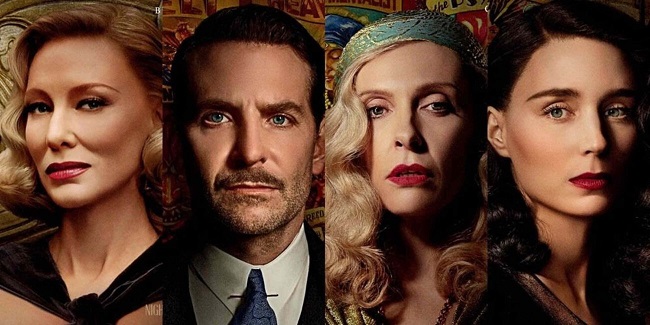Bradley Cooper stars in Guillermo del Toro’s latest film, which follows the shady exploits of a carnival grifter.
In Nightmare Alley, a noir that is richer in mood than convincing characters, Guillermo del Toro puts aside his interest in exotic animals and odd entities to investigate some genuine monsters.

Bradley Cooper Plays a Con Artist
Bradley Cooper plays a con artist with no moral compass, and Cate Blanchett plays a femme fatale who sees right through him, in this adaptation of the William Lindsay Gresham novel that was previously inspired by the 1947 picture starring Tyrone Power. Although it looks and feels authentic to the time period, it lacks the deadly instinct of its protagonists due to a convoluted storyline.
Nightmare Alley, del Toro’s first film after winning the Best Picture Oscar for The Shape of Water, opens in the United States on December 17 and in the United Kingdom the following month.
Cast
He has put together a fantastic cast that includes Toni Collette, Richard Jenkins, and Rooney Mara, and the film’s sense of menace and sophistication is sure to win over affluent viewers.
The film is set between 1939 and 1941 and stars Bradley Cooper as Stanton, a man with a dark and mysterious past who finds work at a carnival, has an affair with a fortune teller named Zeena (Collette), and learns a complex system from Zeena’s husband Pete that allows a mentalist to fool an audience into believing he is all-seeing (David Strathairn).
After winning the heart of the sweet performer Molly (Mara), he takes her with him to Buffalo so that he can make his fortune as a mind reader. There, he meets the psychiatric nurse Lilith (Blanchett), who joins forces with him to con wealthy Ezra (Jenkins), who has confided all of his shame and regret to her. If Ezra lets Stanton talk him into it, he’ll convince him that he can communicate with his dead family and friends — for a fee.
Power, a romantic swashbuckler, saw in Stanton an opportunity to show audiences a darker part of his nature, and he took use of that in the 1947 film Nightmare Alley. Cooper has played disreputable characters before, so the change isn’t as noticeable in this new picture, but the actor clearly enjoys portraying such a fundamentally crooked person, someone who will say anything to gain favour, with an eye on his own self-interest at all times.
Characters
Nightmare Alley has a tendency to view its characters as noir types, and the performances are a little too knowing without always exposing the depth beyond the surface, despite Cooper’s convincing performance as a folksy menace. While Blanchett revels in every minute of Lilith’s icy calculating, Rooney Mara’s adoring Molly is the epitome of an innocent young lady. Blanchett enjoys the tropes of the genre as much as Lilith does behind her beautiful desk, and her perfectly blonde hair and chic clothing establish her as the film’s femme fatale.
Whether at the grimy carnival or in cold, metropolitan Buffalo, the viewer feels ensconced in del Toro’s hyper-real settings thanks to Tamara Deverell’s Art Deco production design and Nathan Johnson’s exquisite, purposefully old-fashioned orchestral score. But the director’s deeper themes don’t quite click.
Although Del Toro has often been on the side of the misfits and outsiders, in Nightmare Alley he finally gives us an outsider who doesn’t deserve our pity. Cooper provides a hint about the demons haunting Stanton (he doesn’t drink because of his problems), but the film is noticeably cold, portraying the world as full of cynical takers and the easy marks they prey upon. Both Stanton’s con artist mind and Lilith’s polished shrink are just two varieties of con artists who prey on the hopeless.
Last Words
However, the film does seem to be a concerted effort on del Toro’s part to move away from the fantasy elements that have defined his oeuvre, with the director observing the very human need to believe in something, even if it’s a con artist, and setting the story in a crushingly everyday world where there’s neither magic nor sarcastic superheroes like Hellboy to save us.
The events of Nightmare Alley lead up to what may be described as an ironic tragedy, in which everyone gets what they deserve. That final idea hurts, even though it’s supposed to pierce us to the quick.












